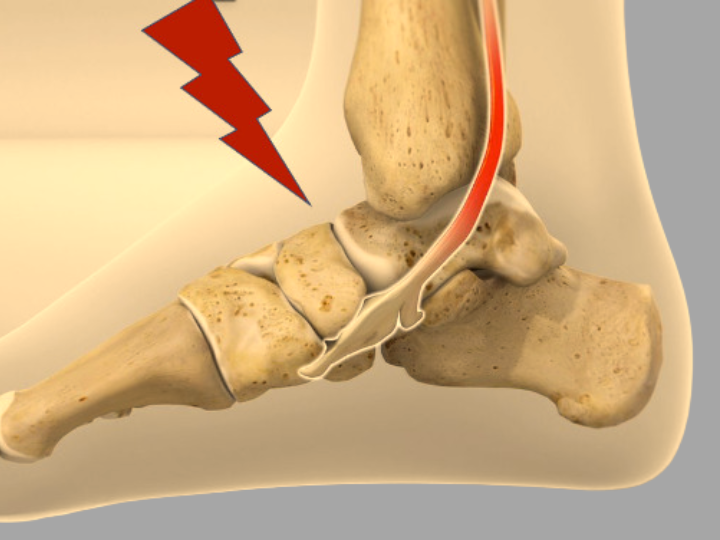Anterior ankle impingement is an affliction that has the potential to severely limit movement and induce persistent pain on the front of the ankle. It is likely to happen in sporting individuals, especially those who take part in sports involving repetitive dorsiflexion of the ankle like soccer, dancing, and running. It can, nevertheless, happen to anyone who has experienced ankle trauma or instability.
At the Foot and Ankle Center of Arizona, we believe that ultimately patient understanding creates improved patient decisions when under our care. This article provides a comprehensive overview of anterior ankle impingement—what it is, how it occurs, what to be aware of in terms of symptoms, and what is best in the way of treatment.
What Is Anterior Ankle Impingement?
Anterior ankle impingement occurs when bone spurs, soft tissue, or other structures in the front (anterior) of the ankle joint become compressed or “pinched” during movement. This compression typically happens when the foot is flexed upward toward the shin, known as dorsiflexion.
Two Types of Impingement:
- Bony Impingement: Caused by bone spurs that form due to chronic stress or past injuries. These spurs can block motion and irritate surrounding tissues.
- Soft Tissue Impingement: Occurs when inflamed or scarred ligaments, synovial tissue, or cartilage gets caught between the bones of the ankle during movement.
Common Causes of Anterior Ankle Impingement
Several factors can contribute to the development of anterior ankle impingement, including:
- Repeated Ankle Sprains: Recurrent injuries may lead to ligament damage and the buildup of scar tissue in the ankle joint.
- Overuse in Athletics: Sports that involve frequent jumping, kicking, or abrupt changes in direction can stress the front of the ankle.
- Ankle Instability: A lack of stability in the joint can lead to abnormal joint movement and impingement over time.
- Previous Ankle Surgery or Fractures: Surgical scars, changes in joint alignment, or improperly healed fractures can contribute to tissue impingement.
Understanding your medical history and activity level is essential in determining the root cause of your condition.
Symptoms of Anterior Ankle Impingement
This condition is often characterized by a dull or sharp pain in the front of the ankle, particularly during certain activities. You may experience:
- Pain when walking uphill or climbing stairs
- Discomfort during squatting or kneeling
- Limited range of motion in the ankle
- Swelling in the front of the ankle
- A feeling of “catching” or “locking” during movement
- Pain during sports activities that require foot flexion
If these symptoms sound familiar, it may be time to consult with a specialist for a comprehensive evaluation.
Diagnosing Anterior Ankle Impingement
At the Foot and Ankle Center of Arizona, diagnosis starts with a thorough medical history review and physical examination. Dr. Kris A. DiNucci will evaluate your ankle for swelling, tenderness, and restricted movement.
To confirm the diagnosis and evaluate the extent of the condition, diagnostic imaging may be ordered, such as:
- X-rays: Useful for identifying bone spurs or osteophytes.
- MRI (Magnetic Resonance Imaging): Helps assess soft tissue impingement, including ligament or cartilage damage.
- CT Scan: Offers a detailed view of bony abnormalities and joint architecture.
This detailed approach ensures an accurate diagnosis and a personalized treatment plan.
Conservative Treatment Options
Initial treatment for anterior ankle impingement often begins with non-surgical methods aimed at reducing inflammation and restoring mobility.
1. Rest and Activity Modification
Avoiding activities that exacerbate pain, such as high-impact sports or deep squats, can allow the joint to heal.
2. Ice and Anti-Inflammatory Medications
Using ice packs and NSAIDs (non-steroidal anti-inflammatory drugs) helps reduce swelling and discomfort.
3. Physical Therapy
A structured rehabilitation program focuses on:
- Improving ankle strength and flexibility
- Enhancing balance and proprioception
- Correcting faulty movement patterns
4. Ankle Bracing or Orthotics
Supportive devices may help reduce strain on the front of the ankle and prevent further irritation.
5. Corticosteroid Injections
In some cases, targeted injections can reduce inflammation and provide temporary relief.
While conservative treatment can be effective for many patients, persistent symptoms may require more advanced care.
Surgical Treatment: Arthroscopic Ankle Debridement
If non-surgical options fail to relieve symptoms, arthroscopic surgery is often recommended.
What Is Arthroscopic Debridement?
This minimally invasive procedure involves inserting a small camera and surgical tools through tiny incisions in the ankle to:
- Remove bone spurs or osteophytes
- Trim inflamed soft tissue
- Restore normal joint function
This technique typically results in less pain, smaller scars, and quicker recovery compared to open surgery.
Post-Surgical Recovery
Recovery from arthroscopic ankle surgery varies, but most patients can expect the following:
- Initial Phase (1–2 weeks): Rest, elevation, and limited weight-bearing with crutches or a boot.
- Rehabilitation (2–6 weeks): Gradual reintroduction of movement and light activity under the guidance of a physical therapist.
- Return to Activity (6–12 weeks): Progressive return to sports or high-impact activities, depending on healing and strength.
The Foot and Ankle Center of Arizona will create a personalized post-op recovery plan to ensure the best outcome.
Preventing Anterior Ankle Impingement
While some risk factors can’t be eliminated, there are several steps you can take to reduce the chances of developing or aggravating this condition:
- Proper Warm-Up: Always stretch and warm up before exercising or playing sports.
- Ankle Strengthening: Regular strengthening exercises can improve joint stability.
- Use Supportive Footwear: Choose shoes that offer good arch support and cushioning.
- Avoid Overtraining: Rest days are critical to preventing repetitive stress injuries.
- Rehabilitate Sprains Properly: Don’t rush back to activity after an ankle injury—complete rehab is essential.
Early intervention after ankle injuries can reduce the likelihood of long-term issues like anterior ankle impingement.
Why Choose the Foot and Ankle Center of Arizona?
Located in Scottsdale, AZ, the Foot and Ankle Center of Arizona, led by Dr. Kris A. DiNucci, DPM, FACFAS, specializes in both non-surgical and surgical treatments for a wide range of foot and ankle conditions, including anterior ankle impingement.
What Sets Us Apart:
- Over 25 years of specialized experience
- Thousands of successful surgical outcomes
- Board-certified and fellowship-trained podiatrist
- Minimally invasive surgical expertise
- Customized treatment and recovery plans
- Compassionate, expert care from a professional team
Our goal is to restore your mobility, relieve your pain, and help you return to the activities you love—safely and confidently.
Final Thoughts
Anterior ankle impingement can be frustrating and limiting, but with the right diagnosis and a personalized treatment plan, most patients can find lasting relief. Whether you’re dealing with chronic ankle pain or recovering from a sports injury, don’t ignore your symptoms.
If you’re in the Scottsdale or Phoenix area and are looking for expert care for ankle pain, we’re here to help.




